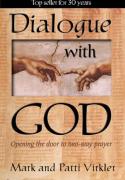 Increasingly, over the past few centuries, the evangelical church has (at least by implication) presented the Christ-story as beginning with the angelic appearances in the two opening chapters of Luke’s Gospel. It seems to me that this is an extension of the persistent impact of the rationalism of the Enlightenment. While virtually all evangelicals would reject the notion that Jesus was simply a wise teacher, nevertheless, it is all too easy to see Him as somehow less than God the Father; certainly Jesus is God, but a Son who was sent on assignment to fix a mess, that His part in the story doesn’t really begin until He comes to earth. But this ignores the clear testimony of the OT prophets, the apostles and the early church. There never was a time without the Son. There never was a time when the Son was not at work, fulfilling the desires of the Father.
Increasingly, over the past few centuries, the evangelical church has (at least by implication) presented the Christ-story as beginning with the angelic appearances in the two opening chapters of Luke’s Gospel. It seems to me that this is an extension of the persistent impact of the rationalism of the Enlightenment. While virtually all evangelicals would reject the notion that Jesus was simply a wise teacher, nevertheless, it is all too easy to see Him as somehow less than God the Father; certainly Jesus is God, but a Son who was sent on assignment to fix a mess, that His part in the story doesn’t really begin until He comes to earth. But this ignores the clear testimony of the OT prophets, the apostles and the early church. There never was a time without the Son. There never was a time when the Son was not at work, fulfilling the desires of the Father.
For many years, I read the Old Testament with the unrealized assumption that the encounters that various Biblical characters had were with God the Father and with angels. When I finally saw Christ in the Old Testament, I saw Him everywhere. Century after century, the church believed and preached that Christ was to be found throughout all of the Old Testament, that it was Christ who held the scriptures together and that apart from Him, there could be no real scriptural understanding. In teaching this, the church was being faithful to the example of Jesus Himself. In Jn 5:39, He said, “You pour over the Scriptures because you think you have eternal life in them, yet they testify about Me.” In Luke 24 we read of Christ walking, unrecognized, with two of the disciples on the Emmaus road. As they walked, Jesus taught them. And what was it He taught? “Beginning with Moses and all the Prophets, He interpreted for them the things concerning Himself in all the Scriptures.” (v. 27)
Martin Luther wrote “Scripture is the cradle in which Christ lies.” Christ was revealed both through types and shadows, and through many actual appearances, called Christophanies. For the historic church, the One who encountered Abraham, Jacob and Moses was not the Father, but the Logos, Christ Himself. This is why the Apostle Paul in 1 Cor 10 wrote about the rock that Moses struck: “that rock was Christ.” One of the early church fathers, Ireneaus, wrote: “If anyone reads the Scriptures with attention, he will find in them an account of Christ…The treasure hidden in the Scriptures is Christ.”
The Bible tells us that no one can see God and live (Ex 33:20), yet the Old Testament is filled with encounters where God was seen––for example, Jacob wrestled with God (Gen 32:30; Moses spoke face to face with God (Ex 33:11); and Samson’s parents feared they would die because they had seen God (Ju 13:22). How can this be? It is John’s revelation of the true identity of Jesus that gives us the answer:
In the beginning was the Word, and the Word was with God, and the Word was God. (Jn 1:1)
Jesus was not just God’s representative to Israel in the 1st century; He is the eternal Word and Son and therefore has always been the Father’s representative on earth––in fact, His “exact expression” (Heb 1:3 CSB). When the Father wants to speak, He does so through His Son. Think about that the next time you read, “and the word of the Lord came to them”.
This is a topic too big for any one blog (or ten, for that matter); however, if we can begin to see Christ as present in all of Scripture from beginning to end, we will gain a greater understanding of the purposes of God built into the foundation of the cosmos, and our revelation of Christ will grow deeper and wider. Yes, Jesus is Savior; but He lives and has always lived as the eternal Son and Word of God, and the second Person of the Triune God.
Throughout the Old Testament, the Son is identified as the Lord, the word of the Lord and the Angel of the Lord. The early church fathers taught that it was Christ who walked in the garden with Adam and Eve (Gen 3:8). Christ appeared to Abraham at various times: simply as “the Lord” (Gen 12:7; 17:1; 19:1 etc.); as the “word of the Lord” (i.e. Gen 15:4); as a Man (Gen 18:1-3, 13, 17); and as the Angel of the Lord (Gen 22:11, 15), which is the most common designation in the Old Testament. Christ appears to many people throughout the Old Testament, for example: Hagar, Jacob, Moses, Gideon, Solomon, Elijah and Daniel. These were all appearances of the pre-incarnate Jesus in the flesh. According to Jn 12:41, it was Jesus who Isaiah saw in his vision of the Lord “seated on a high and lofty throne.” (Is 6:1).
When we begin to see Jesus throughout the pages of the Old Testament, it creates a shift in how we understand God’s greater story. It certainly shines the light of the Holy Spirit on every page in a way that, for me, has made the Old Testament seem almost completely new. And more than that, as I have begun to see Jesus on every page, I find myself seeing Him with new eyes in the world around me.
Finding Christ in the Old Testament is not a theological or intellectual exercise; it is a journey into the truth that the apostle Paul expressed: “He is before all things, and by Him all things hold together.” (Col 1:17)
Below is a more detailed list (but certainly not complete) of appearances of Jesus in the Old Testament:
- Gen 12:1-7; 26:5; 49:3
- Gen 14:21-24; 15:4-8; 16:7-13; 17:1; 18:1-33; 19:13-24; 21:17-22:15; 24:7; 25:11; 26:2-25; 30:33-32:31; 35:1-13; 46:2; 48:3-16;
- Ex 1:6; 3:2-14; 6:2-7; 19:17-21; 20:21; 21:1; 23:20-25; 28:17-20; 32:34; 33:3-22; 34: 5-14
- Nu 1:1; 9:6-9; 12:5-7; 13:1-3; 14:6-11; 20:13-16; 22:22-23:5; 28:1-29;
- Dt 1:3; 5:5; 32:21-33 Jos 1:6; 8:17-20; 10:12,13
- Ju 6:18-27; 13:3, 25
- 1 Ki 3:5; 9:2; 19:5-7
- 2 Ki 1:3,15 Is 6:1-7
- Dan 3:25; 7:13; 10:5,6
- Zech 1:11,12; 3:5,8; 6:12,13












Add new comment